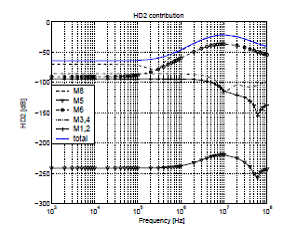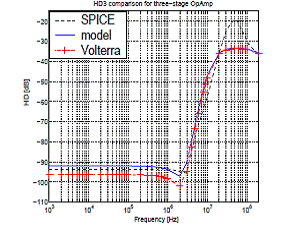





|
Structural Modeling of High-Performance Analog Circuits |
|
This project focuses on developing systematic methodologies to create structural macromodels expressing both linear and weakly nonlinear performance of analog circuits. Models are in the frequency domain, and are customized for the specific circuit.
The proposed methods take the transistor structure of the circuit as input, and generates structural models consisting of linear elements (e.g., controlled and independent current and voltage sources, capacitors, and resistors) and nonlinear voltage controlled current sources, which are symbolically characterized.
The produced models are structural: each of their components has a physical interpretation in terms of the original circuit. In addition, all circuit nodes are represented in the model. This helps circuit sizing and optimization for given performance requirements, and model reusing to produce new models for larger circuits. Model accuracy is controllable. |
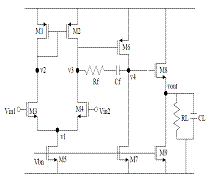
|
The left figure above shows the transistor schematics of a three-stage OpAmp circuit. The right figure illustrates the corresponding circuit model created through our structural modeling technique.
Experiments showed that models are fast to simulate, and have good prediction accuracy compared to SPICE simulation.
· The main purpose of the produced macromodels is to offer short system simulation time for top-down design, while simulation accuracy remains close to detailed circuit simulation.
· Due to the given insight, macromodels could be also used in analog IP macrocell description for simulation and verification of AMS SoCs.
The four figures below show the performance characterization (frequency response, and HD2 and HD3 contribution) through our models as compared to circuit simulation in SPICE or other circuit modeling methods, like Volterra series. |
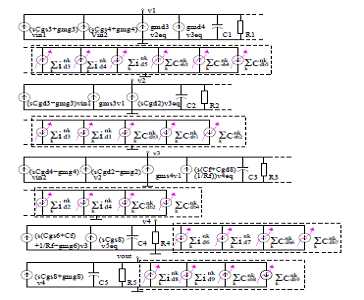
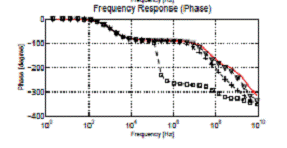
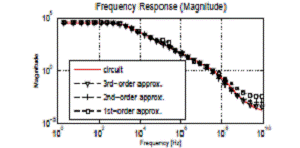
|
Publications |
|
Members |
|
Presentations |
|
Other material |
